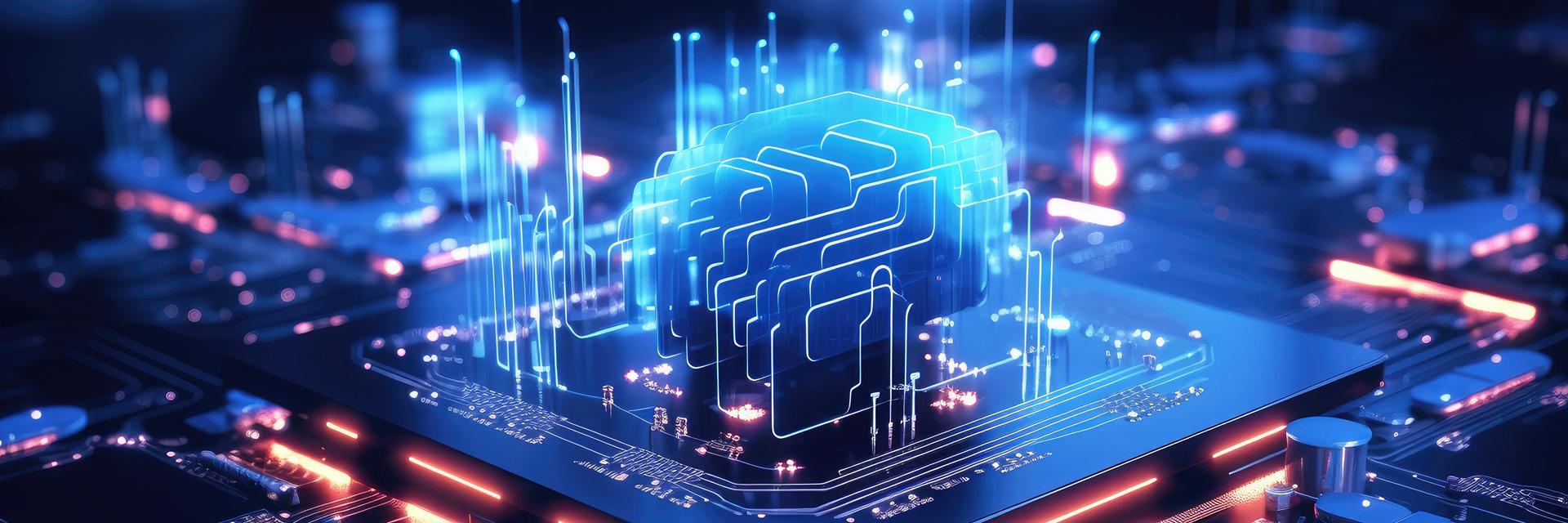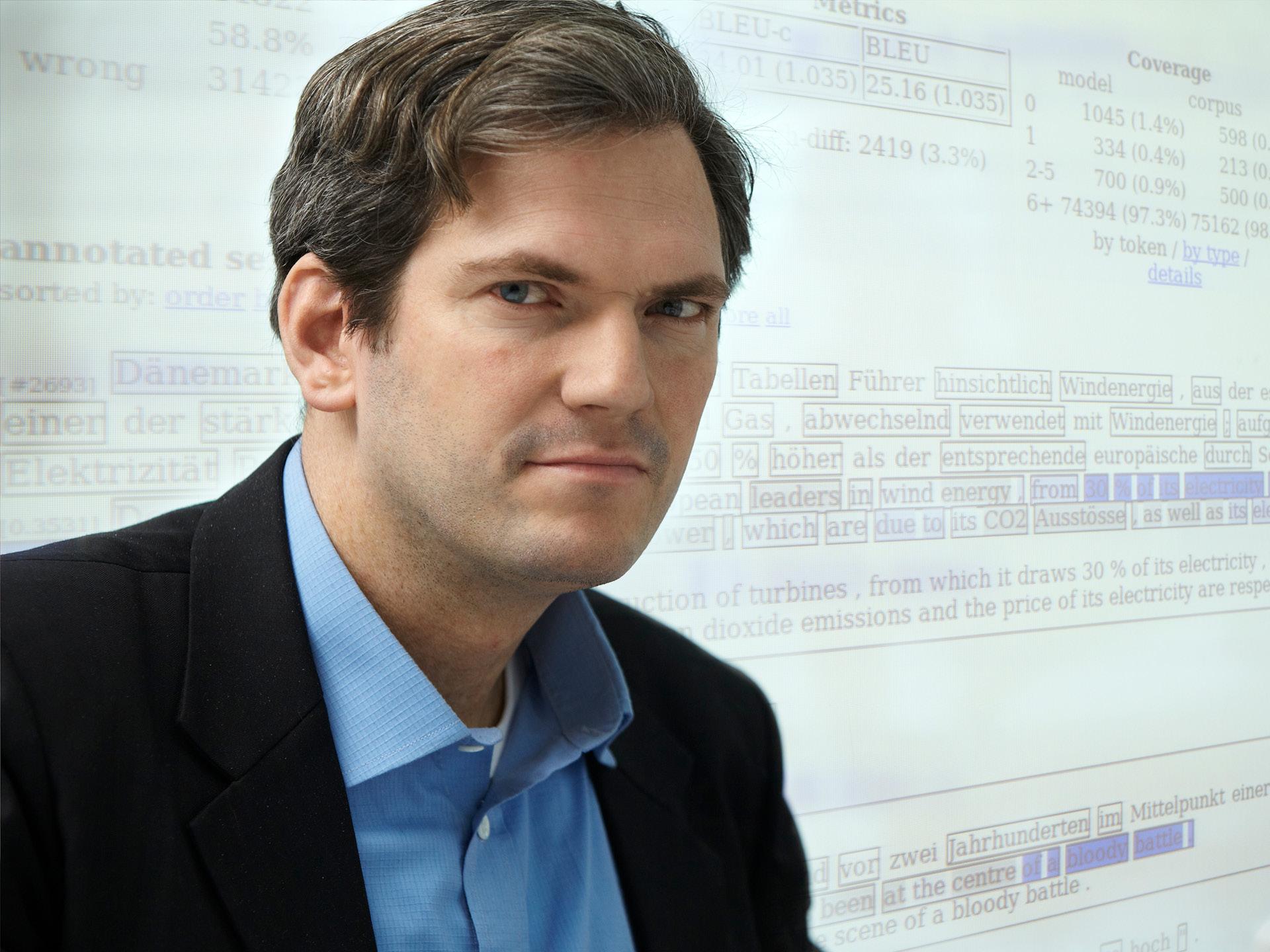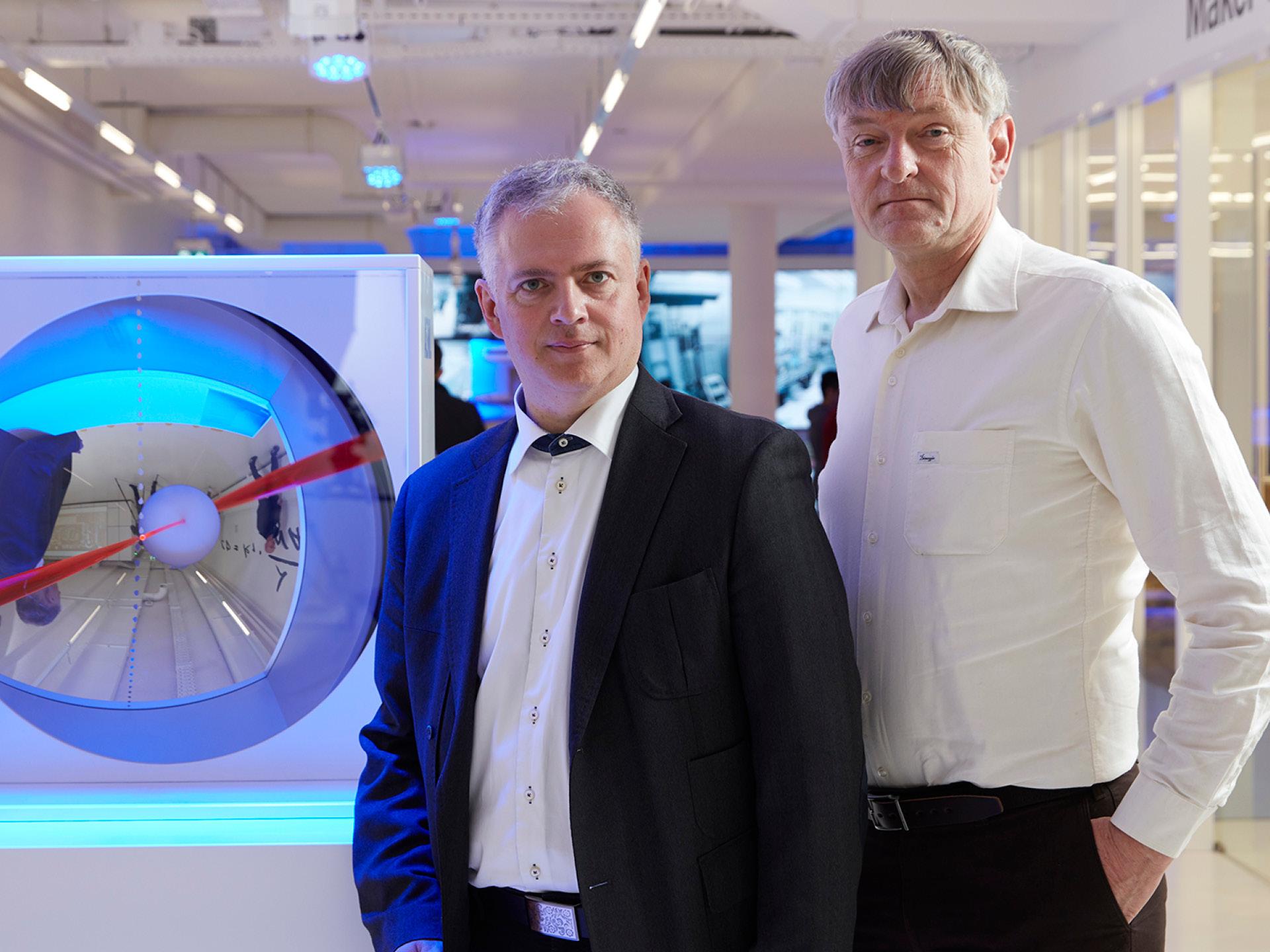Insight into artificial intelligence

The race is on to build the infrastructure for the coming age of artificial intelligence (AI). Already, AI itself is shaping that architecture in multiple ways, from the design of the microchips on which AI runs, to the energy source powering data centres and cloud computing systems around the world, to the way we communicate on a daily basis.
Podcast on artificial intelligence (26 March 2024)
The potential of AI cuts across almost all industry sectors, from mobility to manufacturing and medical technology, and from translation services to the future of digital communication, where it is expected to help enhance the performance, energy efficiency and security of wireless networks. These networks are continuously developing to support everything from the latest social media features to the industrial metaverse. In many ways, 2023 was a formative year for AI, as European Union (EU) lawmakers prepared the world's first comprehensive pro-innovation AI law, the EU AI Act, just months after the publication of the European Chips Act.

Beginnings: Found in translation
In the beginning was the word. Which is also to some extent where AI first made its public presence felt. The use of mathematical probabilities to determine the most likely interpretation of chunks of text in a foreign language pre-empts the age of generative AI (GenAI). Already in 2013, German computer scientist Philipp Koehn and his team were selected as European Inventor Award finalists in the Research category for their machine translation model. Since then, vast increases in computing power and the emergence of large language models (LLMs) mean the range of AI-generated texts has massively expanded. 2023 was a breakthrough year for GenAI, which can now be prompted to instantly provide code, text, images, video, analysis and more.
The rise of innovation in AI is embedded in worldwide innovation ecosystems, the evolution of which is reflected in the latest patenting trends. There are well over 2 000 European patents relating to artificial neural networks alone, for example, which process information for speech recognition, image analysis and autonomous robots, among others, in a way inspired by biological neural systems.
Computer technology (+1.2%) was the third largest technology field for patent applications at the European Patent Office (EPO) in 2023, with steady growth over the past decade, and is the field where many of the advances are made that will shape AI infrastructure in the years to come. Last year’s fastest growing field at the EPO was Electrical machinery, apparatus, energy (+12.2%), to which we will return, followed by the top technology field overall, digital communication (+8.6%), which delivers many of the advances in connectivity required to further advance wireless networks and sustain the Internet of Things.
The US maintained its substantial lead as the top country of origin in computer technology, despite a fall in patent filings in 2023 (-6.8%). Five of the top ten applicants in the field are now from the US, up from four in 2022, with Qualcomm having almost doubled its filings on the previous year and Apple having risen three places to #10.
Asia and Europe are not far behind the US, with the Republic of Korea (+31.9%), France (+18.2%) and Germany (+13.5%) driving growth in 2023. Among the top applicants from the two regions, Samsung (+68.1%) and Huawei (+50.3%) have seen a surge in filings, and Siemens (+11.8%) significant growth.
When it comes to digital communication, the competition is tighter. P.R. China (+9.7%) and the United States (+1.7%) lead, with each accounting for about 28% of the total applications. Growth among applicants from EPO states as a whole (+10.7%) was outstripped only by growth among those from Korea (+24.6%). Among EPO states, Sweden (+10.6%) and Finland (+32.2%) are the growth champions, with Nokia moving up a place and increasing its filings by nearly a third on the previous year, and Ericsson (+9.6%) beginning to reduce the gap between itself and the top two applicants. Qualcomm is the only applicant to lead two of the top ten technology fields, the other being measurement, which includes advances in the sensors that drive many smart connected devices.
AI and power
As global competition intensifies to create the digital infrastructure to support many of the latest advances across almost all the top technology fields, attention is turning not only to faster and ever more compact but also to more power-efficient systems. It has been estimated to take as much electricity as well over 100 average European households consume in a year, to train an LLM on which GenAI runs. However, at the same time, there is also an emerging role for AI to play in supporting the balancing of supply and demand in increasingly complex energy systems.
As the share of diverse sources of renewable energy increases in the overall energy mix, the variables associated with the availability of solar and wind power, for example, increase in significance. For this very purpose, new machine learning models have already been developed to provide more accurate forecasts accordingly. These must also factor in the needs of increasing numbers of devices that connect to electricity grids, ranging from electric vehicles to rooftop solar panels. In this regard, the International Energy Agency has described AI and energy as the ideal "new power couple", pointing out that such machine learning models are already in use. Some of these models involve partnerships between top applicants at the EPO.
The steep rise in computer technology filings from Korea is only surpassed anywhere in the top ten technology fields by the country’s own performance in electrical machinery, apparatus, energy (+42.9%), where Samsung (+176.2%) saw a surge in filings. Not only does this bring Korea closer to the volume of filings from China in a field that delivers many of the world’s clean energy solutions. It also places the two countries as the top countries of origin for the first time, with Germany and Japan placed third and fourth respectively.
The road to autonomous vehicles
At the interface of computer technology and advances in clean energy technologies, there is clearly great potential. One much anticipated outcome is a transport sector that is not only capable of vastly reducing its carbon footprint through electrification, but that is also increasingly automated. Future mobility solutions and electric vehicles are set to take advantage of ever-growing computing power, high-speed connectivity, AI deep-learning algorithms and fast and decentralised data handling. Through the rapid technological evolution in digital communication, IT and semiconductor industries, a completely new range of applications for smart and safe mobility appears increasingly possible.
Next-generation chips
Just as the future of multiple levels of infrastructure, from power systems and mobility to wireless networks, is becoming increasingly intertwined with advances in AI, so the latest chips to come out of the semiconductor industry are in turn determining what can be achieved using AI. Though growth in the field of semiconductors levelled off last year, it outpaced most other fields during the previous two years, surging just as the suspension of supply chains during the pandemic came to be felt most intensely. Furthermore, last year, Stanford University’s AI Index reported that AI was already helping to build better AI, after a leading US chip designer announced the use of machine learning approaches to improve the design of chips that power AI systems.
The leading chipmakers in the major hubs of innovation are now in a race to produce 2-nanometer chips, one of the next-generation technologies that will help make AI algorithms compute faster still, with potentially significant further reductions in energy use. With major new chip-manufacturing facilities due to open across the US and Europe, ASML, NXP and STMicroelectronics all rose in the ranking of the top 100 applicants at the EPO for 2023, with ASML leading the way and now just outside the top 50 (# 55, 409 patent applications), as demand for AI infrastructure continues to drive innovation across the board.

EUV lithography for smaller, more powerful microchips
The computing power of microchips, measured in the density of transistors packed onto a single chip, has doubled every two years since the 1960s. While chips once carried thousands of transistors, now billions fit onto them. This evolution fulfils Moore's law, formulated by Intel Corporation co-founder Gordon Moore. In recent years, the latest advances have been driven by key inventions in extreme ultraviolet lithography (EUVL) manufacturing, including by Dutch engineer Erik Loopstra and Dutch-Russian physicist Vadim Banine. Patented and brought to market by chip equipment manufacturer ASML, their technology uses high-energy lasers to achieve nanoscale details, thereby producing smaller, faster and more powerful semiconductors. Loopstra and Banine won the 2018 European Inventor Award in the Popular Prize category.
Completing the picture: Research, startups and SMEs
The Fraunhofer Institute is the only public research organisation (PRO) to feature among this year’s top 25 applicants in computer technology, where it is a new entrant at #16 with 114 patent applications. However, while the top applicants dominate, there is a strong tradition of research in the field at universities and PROs in Europe and across the world that inevitably leads to numerous spin offs, whether as startups or by now well-established, niche small and medium enterprises (SMEs). The EU’s latest plans to deepen and broaden the innovation ecosystem include providing access to a network of European AI-dedicated supercomputers for numerous public and private users, including startups and SMEs, to train their models on. Meanwhile, the EPO has created a Deep Tech Finder that includes startups from throughout Europe specialising in core AI activities.
Discover over 100 European startups in core AI
Our Deep Tech Finder presents startups across Europe specialising in core AI business and research activities, ranging from AI-driven video compression technology and 3D body scanning to generating potential new outcomes in materials science and the optimisation of more power-efficient neural networks. The EPO’s latest tool blends business data with the information on each startup’s patent portfolio available in the EPO’s public patent databases. In total, it presents several thousand startups seeking funding for initiatives across a broad selection of industries and technology fields.
Outlook
Optimistic outlooks on humancentric uses of AI assert that AI-driven technologies will complement and create more jobs than they replace. As digital infrastructure continuously develops with every new chip plant, every new artificial neural network and every new LLM, the quest for sustainability continues too, including in terms of achieving more energy-efficient server solutions and production, and of shaping the transition to cleaner energy systems per se. Taking into consideration all the processing and processes involved in creating the components in your devices, whether a smartphone, tablet or laptop, the raw materials for those components are likely to have travelled a distance equivalent to circulating two, three or more times around the planet, from extraction to the purchase of the finished device. Connectivity, like innovation and the quest for a more sustainable world, is a never-ending story. A story that incorporates all the world’s major innovation hubs and where patent intelligence can always be called upon, both to interpret and ultimately to shape the narrative.



